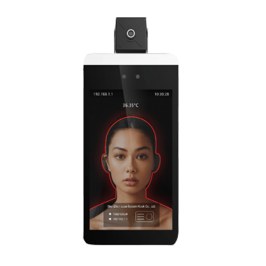Keeping Children Safe in the Classroom During COVID-19: 5 Tips

During the COVID-19 pandemic, our school communities have suffered in ways we could not have imagined. School leaders, teachers, parents, and students have been waiting for schools to reopen to reclaim their community life and education habits. Educators and parents admit that quarantine has had a negative effect on children's mental health. It distanced them from other children and important adults in their lives, undermining many of their support systems. One way for kids to recover from the trauma that came with severe, extended lockdown measures is for a safe return to school this fall.
However, there is a real concern among school leaders on how to reopen schools without exposing the community to high risk. Studies have shown that COVID-19 tends to be less harmful to children, but they are still able to spread the virus at an alarming rate. Unfortunately, there isn’t a unified national approach to abolishing the risk of Coronavirus spreading in schools. How can schools overcome these challenges in a way that ensures school safety and a full, effective year of education? This guidance is intended to offer effective ways to keep schools secure and avoid another quarantine and remote learning.
Tip 1: Conduct Body Temperature Monitoring
Elevated body temperature is the first sign of COVID-19 infection. That’s why it’s so important to provide temperature monitoring systems in schools. If fever-like symptoms are identified on time, it’s possible to quarantine a person before he/she transmits the virus to people around. Temperature monitoring may seem complicated, especially when it comes to time and labor in a school setting. That’s true if plain temperature guns are used. In spite of their small size, portability, and accurate readings, they are very inefficient if there is a significant flow of children and personnel to check in a short amount of time. In such high-traffic areas as schools, it’s better to use smart temperature monitoring systems. Here are some effective solutions that are designed specifically for use in schools.
Thermal metal detector
This versatile device features a metal detector, face recognition, and a thermal scanning camera. As a security checkpoint, it can be installed at entrances, permit entry to verified individuals, check the body temperature of each incomer, and detect metals.
Cameras
Smart thermal cameras are engineered for surveillance and monitoring body temperature in vast groups of individuals. They are ideal for schools because children and teachers won’t need to stop to be checked, eliminating long lines and additional teacher supervision. They’ll just walk past the camera and it detects individuals with fever-like symptoms. Smart cameras can be installed both indoors and outdoors, keeping children safe in the classroom.
Smart access kiosks
These devices are ideal temperature scanning checkpoints for schools with multiple mounting options including wall-mounts and a variety of stand heights. This equipment can be integrated with door access, and it has a face recognition tool. Students and staff stop briefly in front of the smart kiosk for verification and temperature monitoring before entering the building. The procedure takes seconds, so there won’t be long waiting lines.
Smart sanitizing hubs
These devices come on stands and include a facial recognition tool, temperature checking gauge, and hand sanitizer dispenser. Children can sanitize their hands while having their temperature checked. Such a multi-functional device is ideal for entryways, halls, and classrooms. Additionally, these smart systems send visual and audio notifications to personnel if an individual with elevated body temperature is identified. They produce accurate and fast readings and can be integrated into existing security systems. They are also easy to install, maintain, and operate. Smart sanitizing hubs also check that the user is wearing a mask and alerts them if not. You’ll enhance schools' preparedness for coronavirus with each of these intelligent machines.
Tip 2: Conduct testing
Virus-specific tests are obviously the most effective way to check if the person is infected. It’s a good idea to conduct them before school starts and should be one of the requirements of back-to-school safety. However, schools can’t provide frequent testing. As the U.S. education correspondent Cory Turner says “Testing is a question of access, staffing and logistics. What we're gonna see schools doing is temperature checks.” Besides, prices on COVID-19 tests vary greatly, they start from 20$ and go up to 850$ per single test, not including the cost of specimen collection, provider visit, facility fee, etc. The testing is not always covered by insurance, making it too expensive for some people. To sum up, testing is a great method, but it can't be done broadly and as often as we would like.
Tip 3: Wearing masks
Although wearing masks is not comfortable for kids and it can be difficult to enforce some of them have a piece of cloth on their faces, we do have to encourage masking in schools. As has been shown, one of the ways of COVID-19 transmission is via mouth and nose secretions. Masking is an important measure to protect oneself and others. Authorities in lots of states make wearing masks obligatory in schools. It’s subject to older children, middle school and up. But considering new evidence on masking, pediatricians recommend covering mouth and nose for all kids as much as possible.
Tip 4: Dividing kids into pods
We all know that social distancing is a must nowadays. Having fewer kids in the school makes distancing possible and limits contacts in crowded areas. Dividing kids into small groups (10-12 children), or so-called pods, would be wise. If there is an infected child, you’ll have to quarantine only a small group instead of all children in the building. Also, utilizing hybrid class schedules in which students come to school on alternating days, can help. Actually, dividing children is one of the most powerful Coronavirus safety tips for schools. The fewer people in a room, the fewer chances for cross-contamination.
Tip 5: Communicate with families, staff, and children
In these confusing and frustrating times, school leaders must talk with parents, staff and children. They should explain what to expect when kids return to school, update and discuss the information about COVID-19 in the area, notify the community if there are COVID-19 cases in the school and keep an open line of communication. All in all, school leaders have to arrange an effective communication process to prevent possible problems.
Final Words
Quarantine and, in turn, remote learning, has done much harm to children. If we want to reopen schools, we must take into account and uphold health tips for school students. We should heed messages about frequent temperature monitoring, hand sanitizing, wearing masks, etc. that come from infectious disease experts and public health experts. It’s the only way to protect ourselves and our kids.





